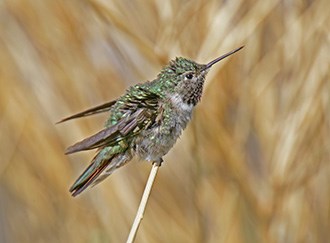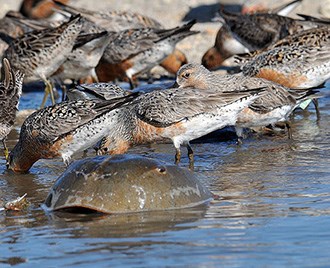Last updated: July 18, 2018
Article
3 Ways to Celebrate the 100th Anniversary of the Migratory Bird Treaty Act

NPS Photo.
Soaring toward the future
As we enter a new era for the MBTA, new threats emerge. Habitat loss, pollution, and other threats continue to harm our native migratory birds—one-third of all North American species need urgent conservation action*! Luckily, national parks and other public lands provide the perfect place to continue carrying out the act’s mission - and you can help! Here are three ways to bird your world in national parks:

NPS Photo.
1. View birds in national parks!
Some of the most amazing species of bird call national parks home. Whether you visit towering forests or sandy seashores, national parks offer some of the best birding opportunities in the country. And now, birding can be more than just a hobby! You can contribute crucial conservation data about birds by just sharing a pin or a photo through citizen science mobile apps, like iNaturalist. When you’re birding in a park, check at the visitor center to see what apps they recommend.

NPS Photo.
2. Restore habitat in simple ways
Supporting birds can be as simple as beautifying an area. Picking up small pieces of litter, such as plastic bottle caps or fishing line (often called micro-trash) prevent the trash from ending up in a bird’s stomach, causing potentially fatal health issues. Likewise, planting a garden can have big benefits for migratory birds. National parks like Carl Sandburg Home National Historic Site have planted bug-friendly pollinator gardens just for this reason! No, they may not enjoy it for the pretty plants, but the birds do get a tasty treat from the garden’s smaller visitors!

NPS Photo.
3. Learn about birds!
Even if you’re not quite itching to get out your birding binoculars just yet, you can support migratory birds by learning about the species around you and in national parks. In fact, birds can tell you a lot about the world you live in as indicator species to the health of the environment. In addition, birds serve as true shared resources, connecting us to the continent we live in as they migrate from region to region. One great way to learn about the bird species in national parks is to follow them on social media, like Glen Canyon Recreation Area, who shares an educational, fun bird trading card every month. Don’t forget to check out other great resources, such as the National Audubon Society and the American Bird Conservancy for everything bird!
Ready...Set...Bird!
If celebrating the 100th anniversary of this act isn’t enough, you can celebrate birds all year long! Year of the Bird continues through the end of 2018 and you’re invited to #birdyourworld whether your in a national park or not! See what bird events are near you and share your soaring shot with us at Explore Nature!
